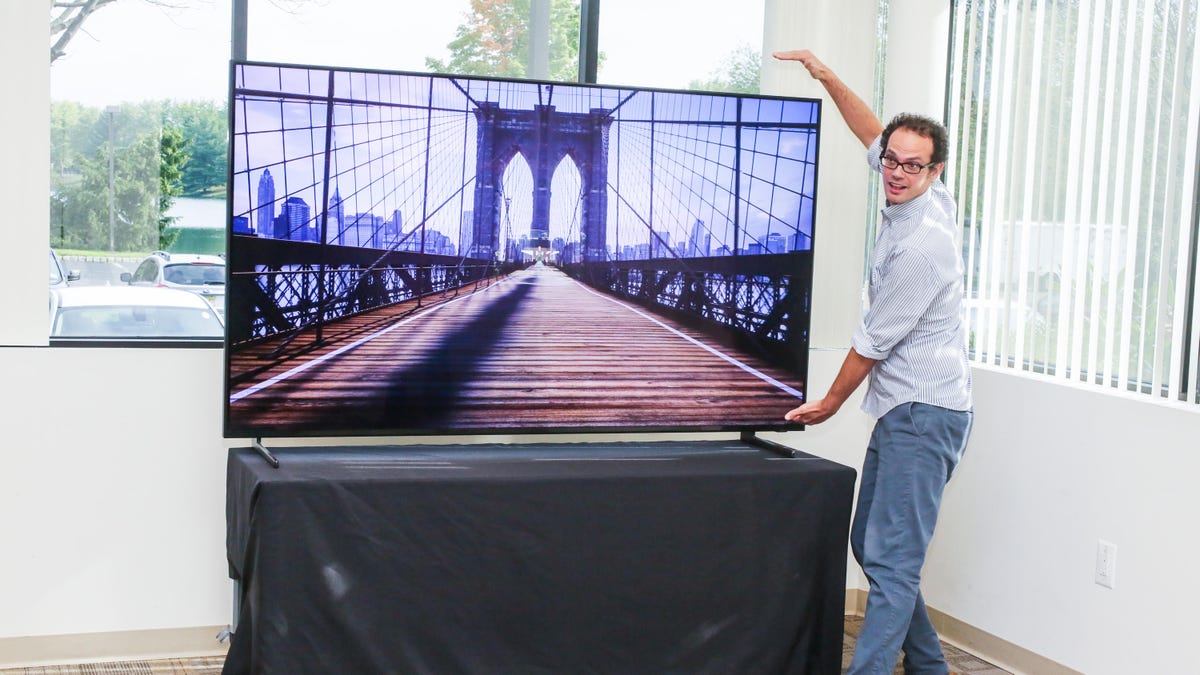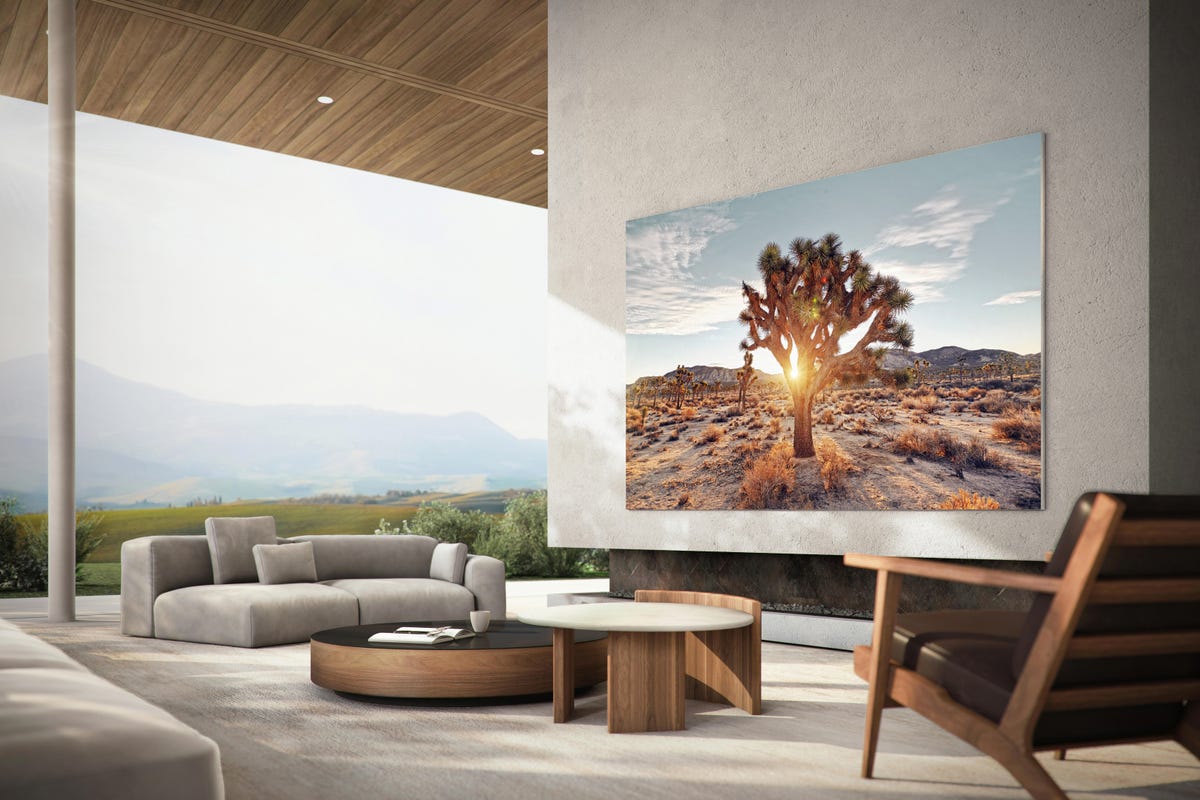If you’re considering replacing your TV, consider that you can probably get a much larger TV than you might think. If it’s been a while since you bought your current TV, you might be surprised to learn that what was once considered “large” is often considered “midsize” at most. Today, even 50-inch TVs aren’t widely considered to be “big.”
The increases in TV sizes over the last few years are because manufacturers can make larger screens more cheaply, along with 4K and 8K resolutions making huge TVs more usable. Ultraslim designs also mean that larger screens take up less space.
So if you’re scouring for deals online or in-store, keep an eye out for larger sizes than you might have originally planned. The reality is, you can probably go a lot bigger. How big? Maybe you don’t need a TV the size of a wall or a TV <span section="shortcodeLink" label="Wall-size, million-dollar MicroLED TVs point to the future of television" asset-type="article" uuid="4d0bac89-1e93-46aa-b265-97dab5a0c361" slug="wall-sized-million-dollar-microled-tvs-point-to-the-future-of-television" link-text="that is a wall” href=”https://www.cnet.com/tech/home-entertainment/wall-sized-million-dollar-microled-tvs-point-to-the-future-of-television/” edition=”us” data-key=”link_bulk_key” api=”{"id":"4d0bac89-1e93-46aa-b265-97dab5a0c361","slug":"wall-sized-million-dollar-microled-tvs-point-to-the-future-of-television","contentType":null,"edition":"us","topic":{"slug":"tvs"},"metaData":{"typeTitle":"Explainer","hubTopicPathString":"Tech^Home Entertainment^TVs","reviewType":null},"section":"how_to"}”>that is a wall, but in most homes, a 65- or 75-inch TV will fit just fine.
Overall our advice is simple: Get as big a TV as you can afford. The longer answer depends on your room, your seating distance and the acceptance factor of any cohabiting co-deciders.
Here’s how to figure out how big you can go.
Read more: Best 75-Inch TVs for 2024
TV sizes and seating distance
If you ask TV and theatrical industry groups, they’ll tell you to measure your seating distance to determine the ideal screen size. The farther away you sit, obviously, the smaller your TV appears. The ideal s is to have a screen that fills a certain amount of your field of view, though how much is “ideal” is up for debate.
THX recommends, for example, that you multiply your seating distance (in inches or centimeters) by 0.835. This gets you the recommended screen diagonal. If you’re like most people and you’re sitting about nine feet from your TV (108 inches), THX recommends a screen roughly 90 inches diagonal. So yeah, that big 65-inch TV you’re looking at is not “too big,” at least as far as THX is concerned.
<figure uuid="cfb1c765-773f-4f06-afd8-9ca5b925924e" size="large" float="none" image-caption="
Consider 55 inches the minimum screen size for most living rooms.
” image-credit=”LG” image-alt-text=”An illustration of different screen sizes stacked one behind the other.” image-filename=”image.png” image-date-created=”2021/06/04″ image-width=”570″ image-height=”420″ image-do-not-crop=”false” image-do-not-resize=”false” image-watermark=”false” lightbox=”false” edition=”us” class=”c-shortcodeImage u-clearfix c-shortcodeImage-large c-shortcodeImage-hasCaption”>

This 85-inch Samsung is pretty big. But is it big enough?
TV resolution and screen size: 4K, 8K, 1080p
Nearly all new TVs are Ultra HD 4K resolution. A growing number are 8K. Only the smallest and least expensive models are still merely HD (1080p or 720p).
To see all the detail available in a 4K or 8K resolution image you either need to sit very close, or have a very large TV. In fact, if you’re sitting nine feet away, even “big” TVs are still too small for you to see all the resolutions for which they’re capable. Or to put it another way, the resolution of your next TV is going to be plenty unless you’re sitting very close, or are getting an exceptionally large TV (over 100 inches). So yeah, you don’t need an 8K TV. If you want to know how far away you need to sit before you can no longer see individual pixels, Sony offers the following chart.
Sony’s recommended seating distance

